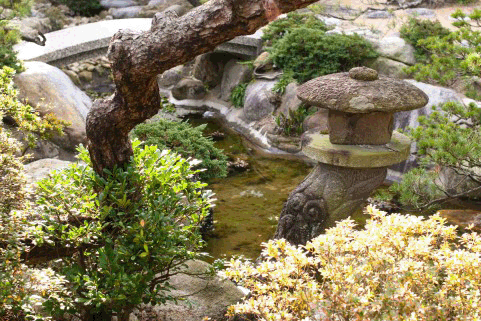日本(和)の世界を英語で説明してみよう!
Tweet第1回(更新日:2014年01月20日)
「詫び」と「寂び」を英語で説明しよう

「詫び」も「寂び」も質素で静かなもの意味します。簡略を良しとし、華美を嫌うという点が共通しています。茶道や俳句などに代表される日本の伝統的な芸術が目指す究極の美的境地です。
「詫び」は静かに澄んで落ち着いた様子を表すもので、主に茶道を大成した千利休が追求した境地です。「寂び」は枯れて渋みがあることを意味し、芭蕉の俳句の理想的境地とされました。彼らは、利害やわずらわしい人間関係から距離を置き、自然と一体となった美を追求したのです。
さて、これを英語で説明してみましょう。
"Wabi" and "Sabi" are the highest aesthetic*1 values aimed at by traditional Japanese arts, particularly the tea ceremony*2 and the seventeen-syllable poems*3. The two valuses have at botoomo common qualities such as a sense of quiet sadness at the bottom, encouragement of simplicity and rejection of gaudiness. "Wabi" expresses a way of being quietly clear and calm, a state mainly pursued by Sen-no-Rikyu, who perfected the art o the tea ceremony. "Sabi" means having well-seasoned, refined*4 simplicity, an ideal state in seventeen-syllable poems of Basho, who is a prominent*5 poet*6 in the Edo period. Both men sought the beauty that is one with nature, free from worldy concerns and annoying human relations.
*1aesthetic: 美的な
*2the tea ceremony: 茶道
*3seventeen-syllable poems: 俳句
*4refined: 洗練された
*5prominent: 著名な
*6sought: seek(探し求める)の過去形
「詫び」や「寂び」は日本語でも説明するのが難しい概念です。でも、この二つは日本(人)に特徴的な美的感覚なので、きちんと外国人に英語で説明できるようになりたいですよね。次回もどうぞお楽しみに。
執筆者:こまたん
(次回の内容や更新情報などは、こまたんのツイッターでお知らせしてます)

